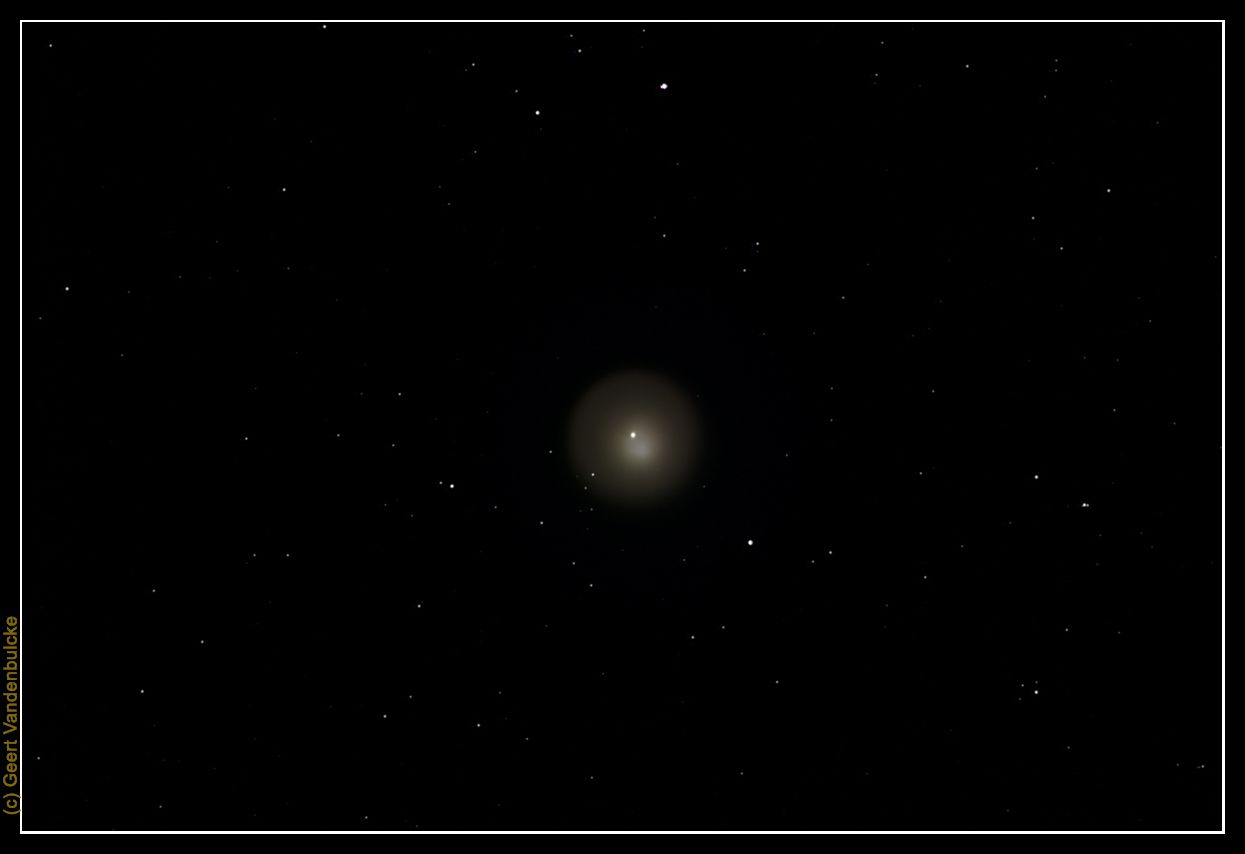
Comet 17P Holmes
An extra-ordinary object, a far away comet that over a short period of time flared up from magnitude 17 to naked eye visibility. The first days of this event were invisible from my location due to bad weather conditions.
The night of 29-30 October brought some clear sky between moving clouds, so I managed to take 11 luminance pictures and 4 each of RGB. The luminance pictures where taken each time when the opportunity between clouds allowed it, then cirrus cloud moved in - the RGB images were shot in one sequence through this thin cloud.
Image made with TMB115 f/7 APO refractor, ST-10XME and CFW-10 with Astrodon filters. All sub-images where exposed for 10 seconds, this allowed to just avoid blooming on the luminance image. Images where aligned and median combined, followed by minimal processing in Photoshop.

My second image was made on 30 October 2007 using my Vixen VMC260L @ f/11. Canon EOS 350D, 4 images of 30 s each combined.
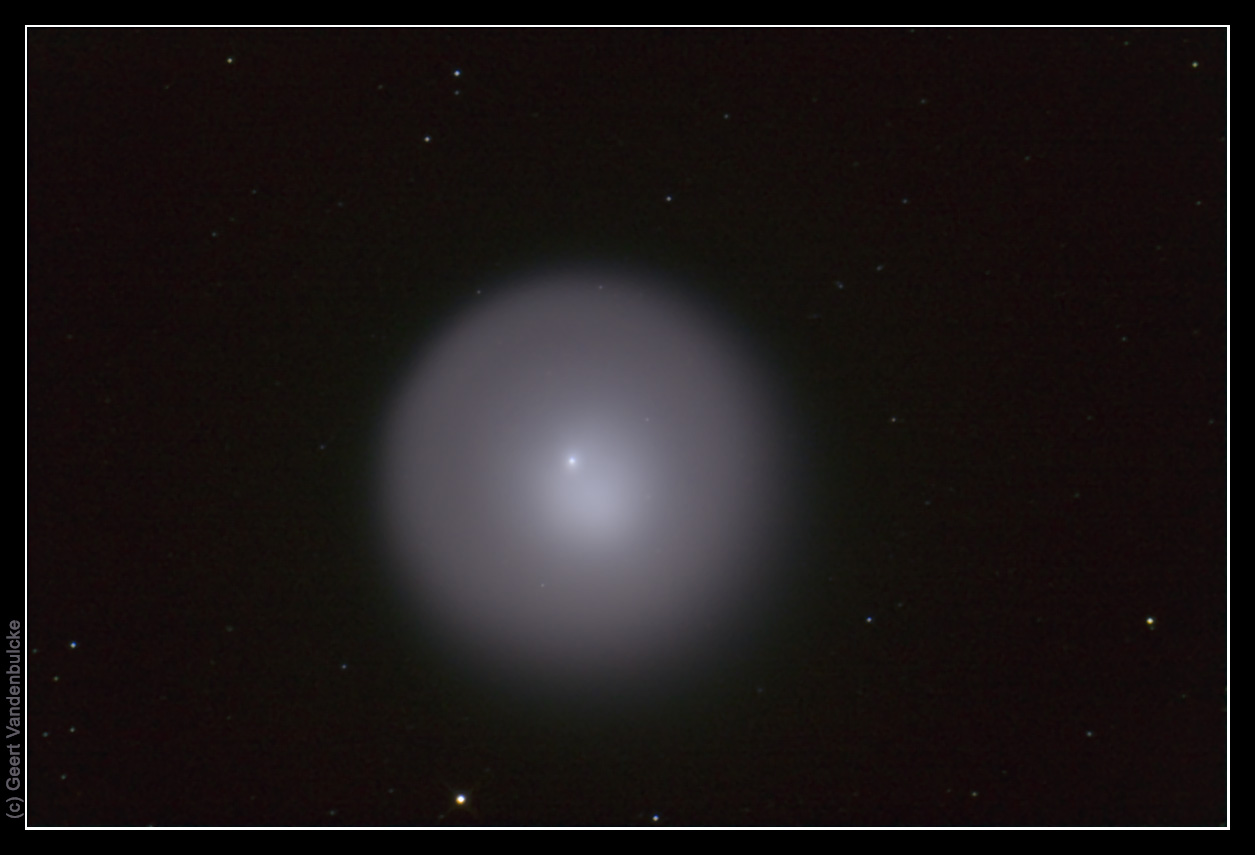
Also on 30-31 October I used my ST-10XME on the VMC260L @ f/6.3 for a LRGB image. The Luminance consists of 30 images of 45s each, the RGB image 9 x 45 s for each color. I also processed some more on the luminance image to reveal structure in the coma near the core, see the grayscale crop below.
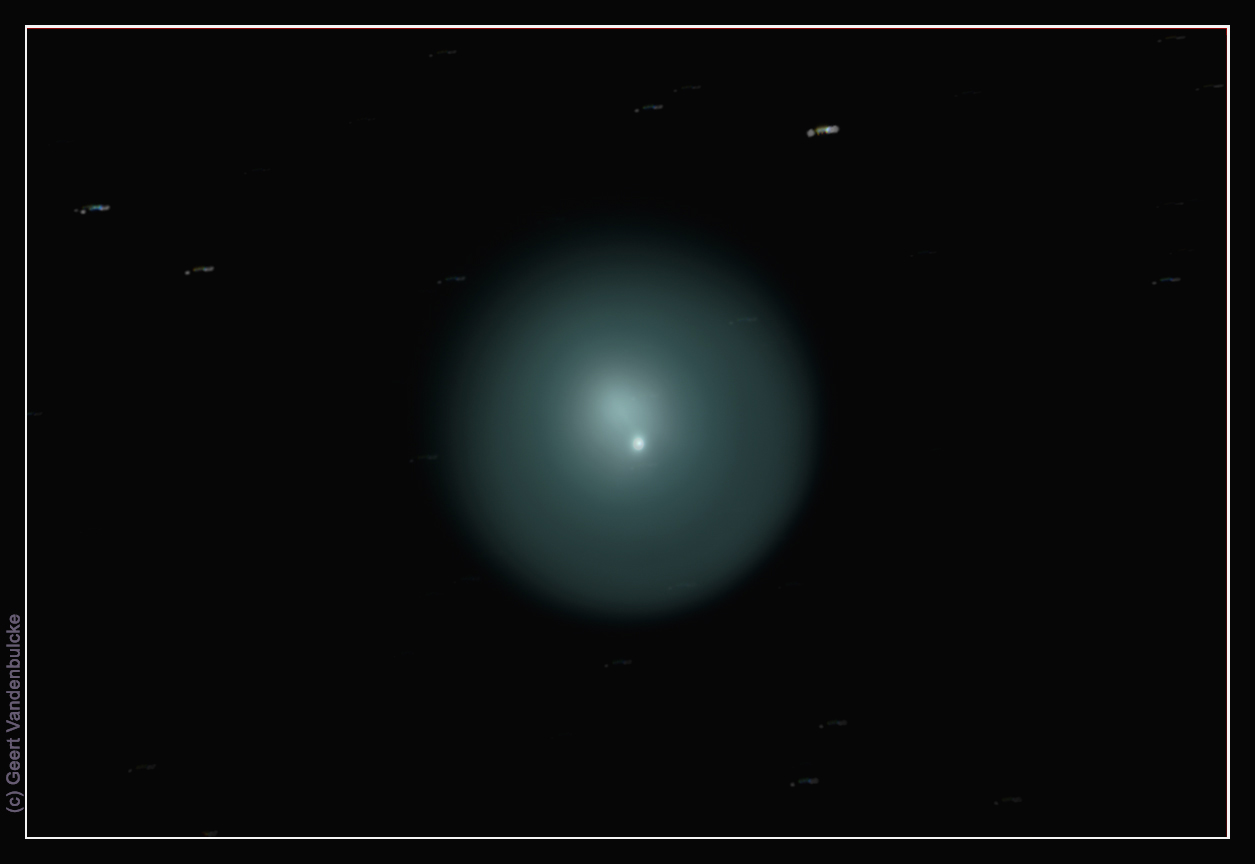 .
.
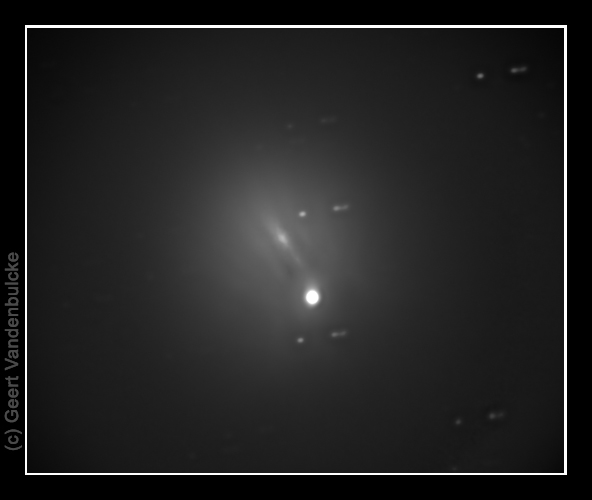
On 31 October I had a short window between the clouds, I only could make a luminance image of 10 x m exposure with VMC260L and ST-10XME. At this point the comet allready was too large to be captured fully with this combination. Again I processed this image to reveal detail near the core.
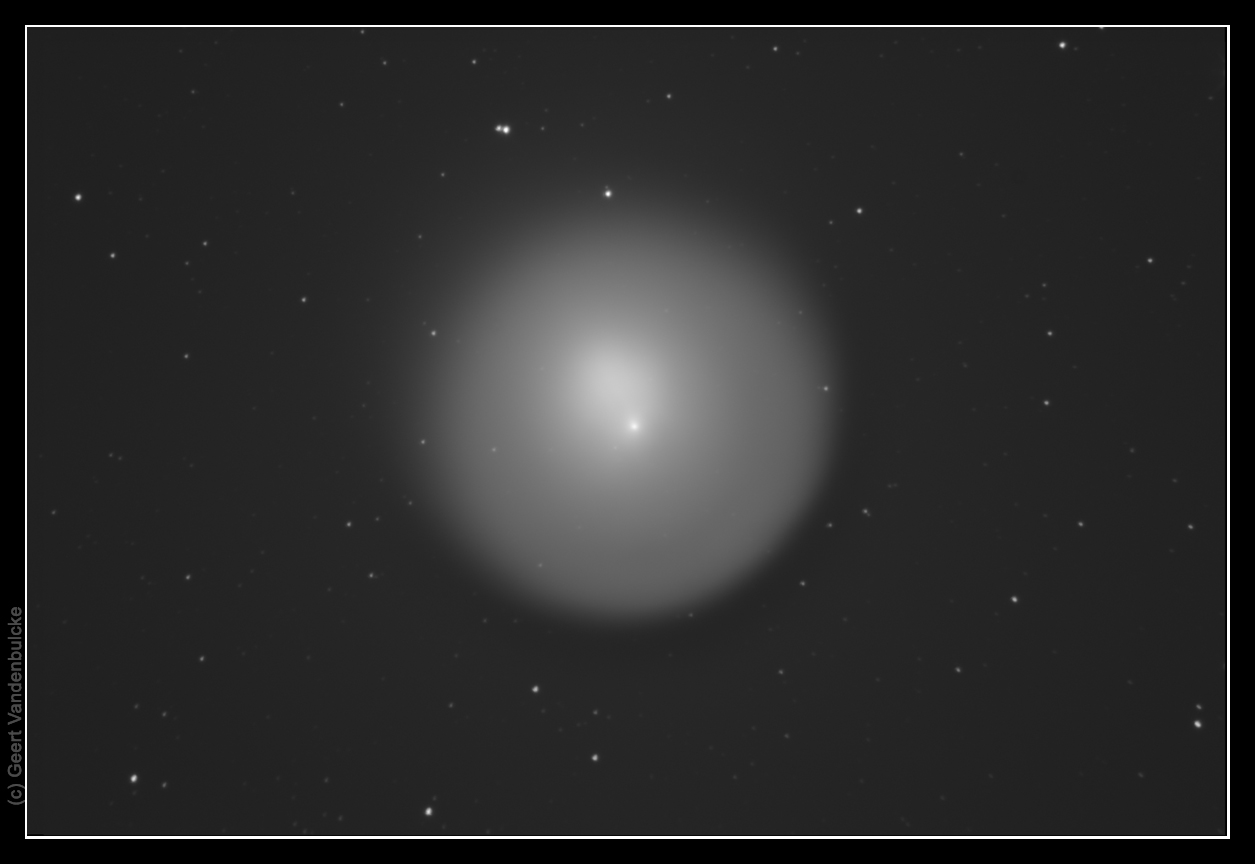
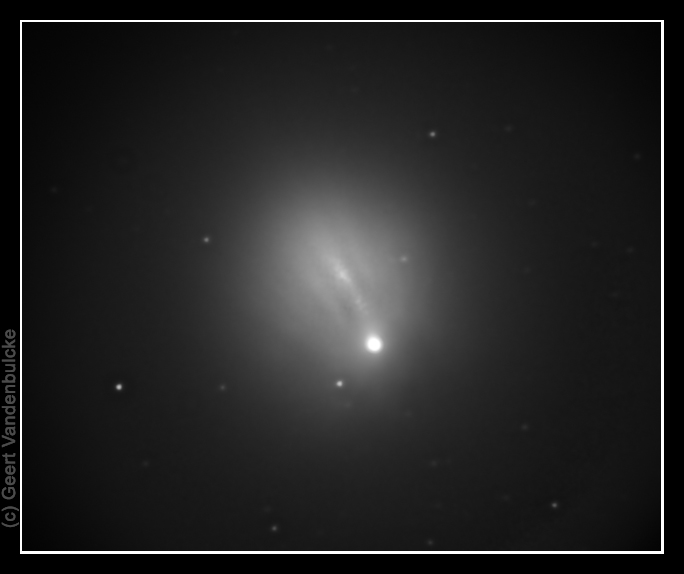
15 November 2007 had been clear all day. I just managed to take one RGB series and clouds rolled in again. This is with my ST-10XME, TMB80/600 APO, RGB one of each with 1 minute integration, assembled in Photoshop.
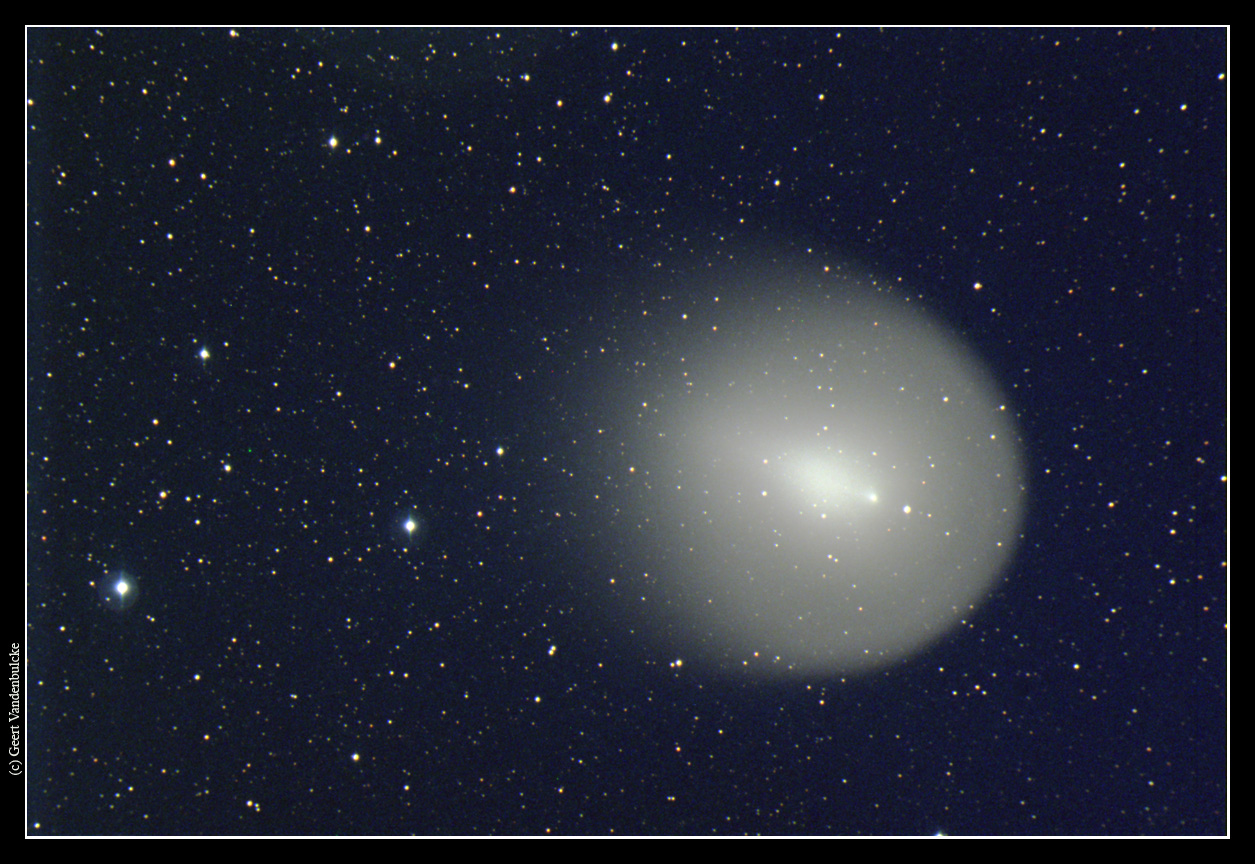
Better weather on 11 November 2007, used my TMB 80/600 APO reduced to f/6 or an LRGB image with ST-10XME and CFW10, Astrodon filterset. 10 images of one minute each for LRGB.

After the image above, I switched to my TMB 115/800 APO for a luminance image, 3 integrations of 5 minutes. Used some more extreme image processing to reveal detail in the coma.
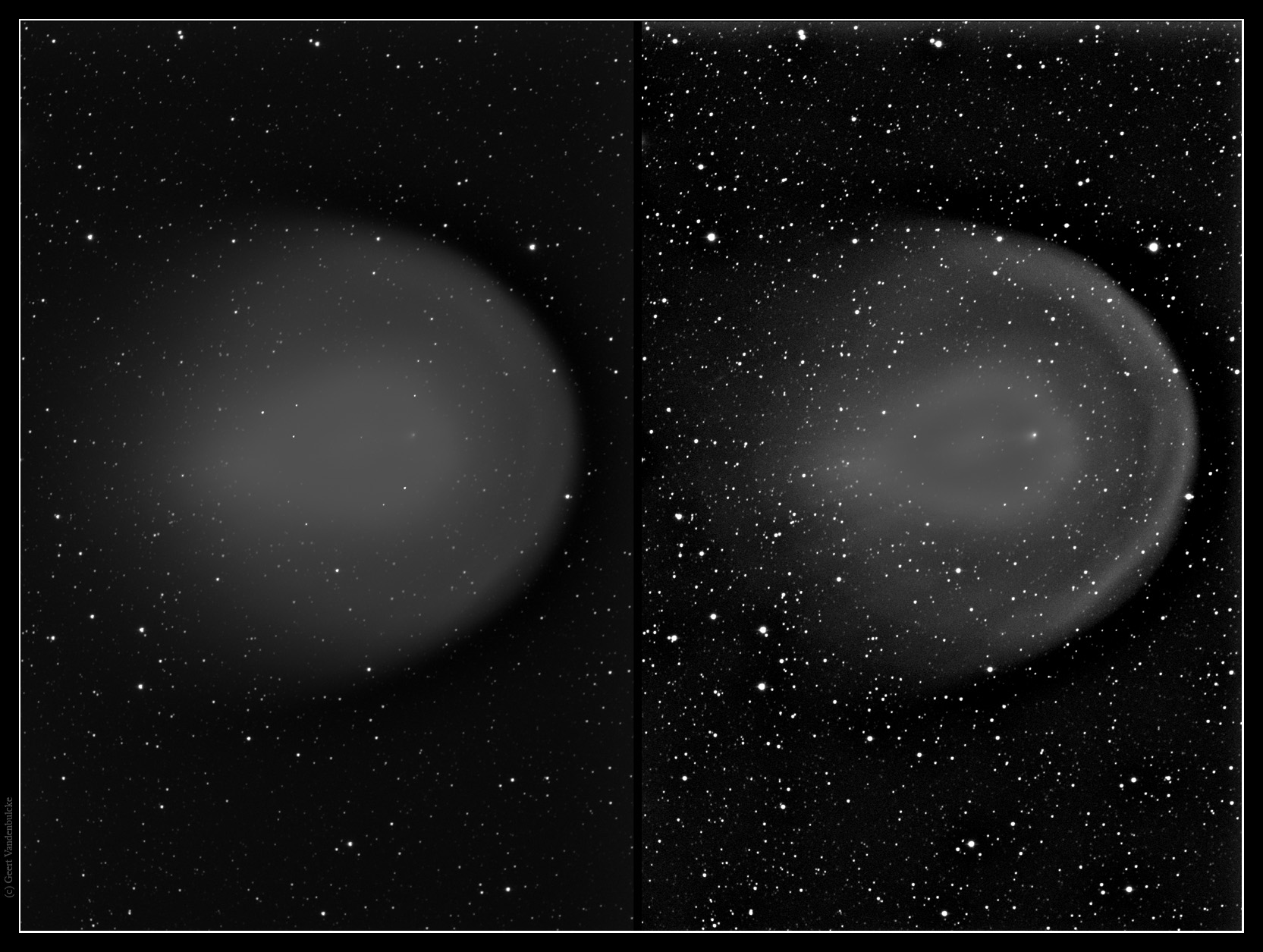
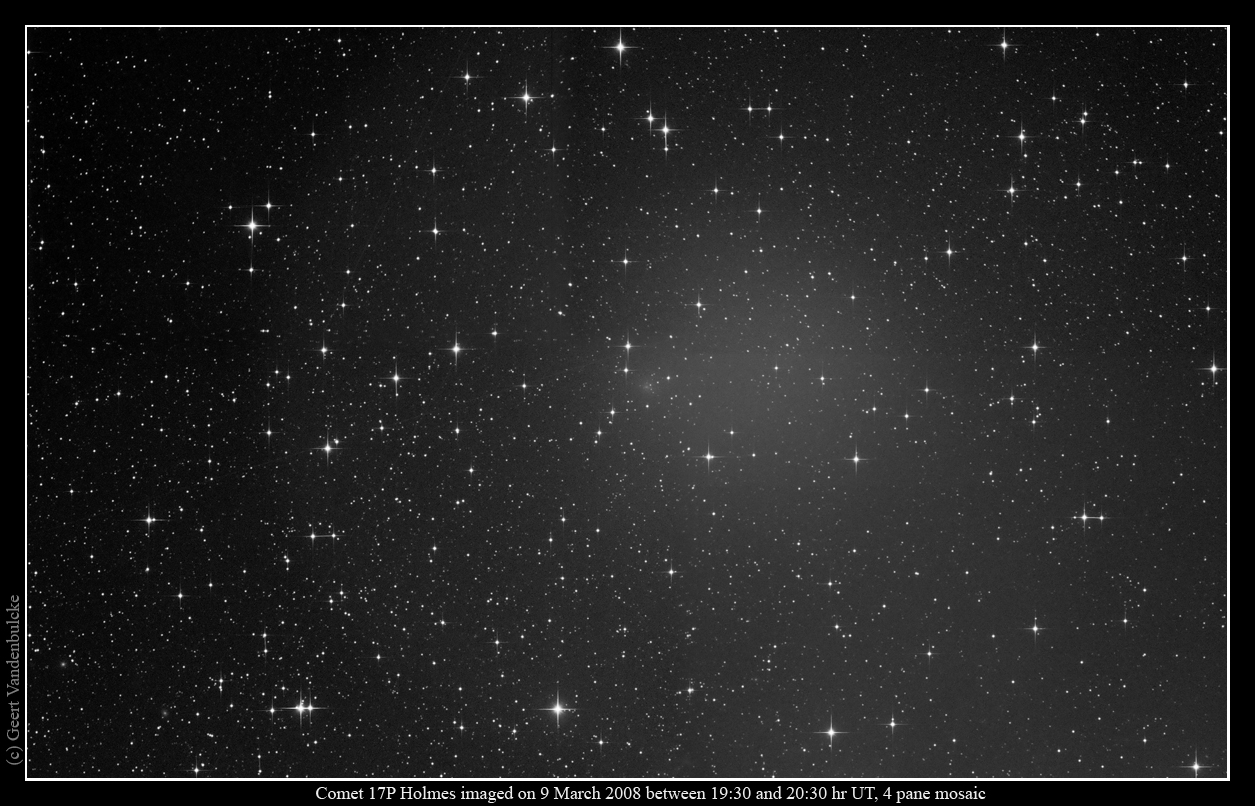
This is a 4 pane mosaic made with my TMB115 refractor and SBIG ST-10XME. The field shown is approximately 2°x1.2°. Each pane is 3x5=15 m exposure. I had to stretch the image a lot to make the comet visible against the background, so still some residue of the mosaic borders can be seen.